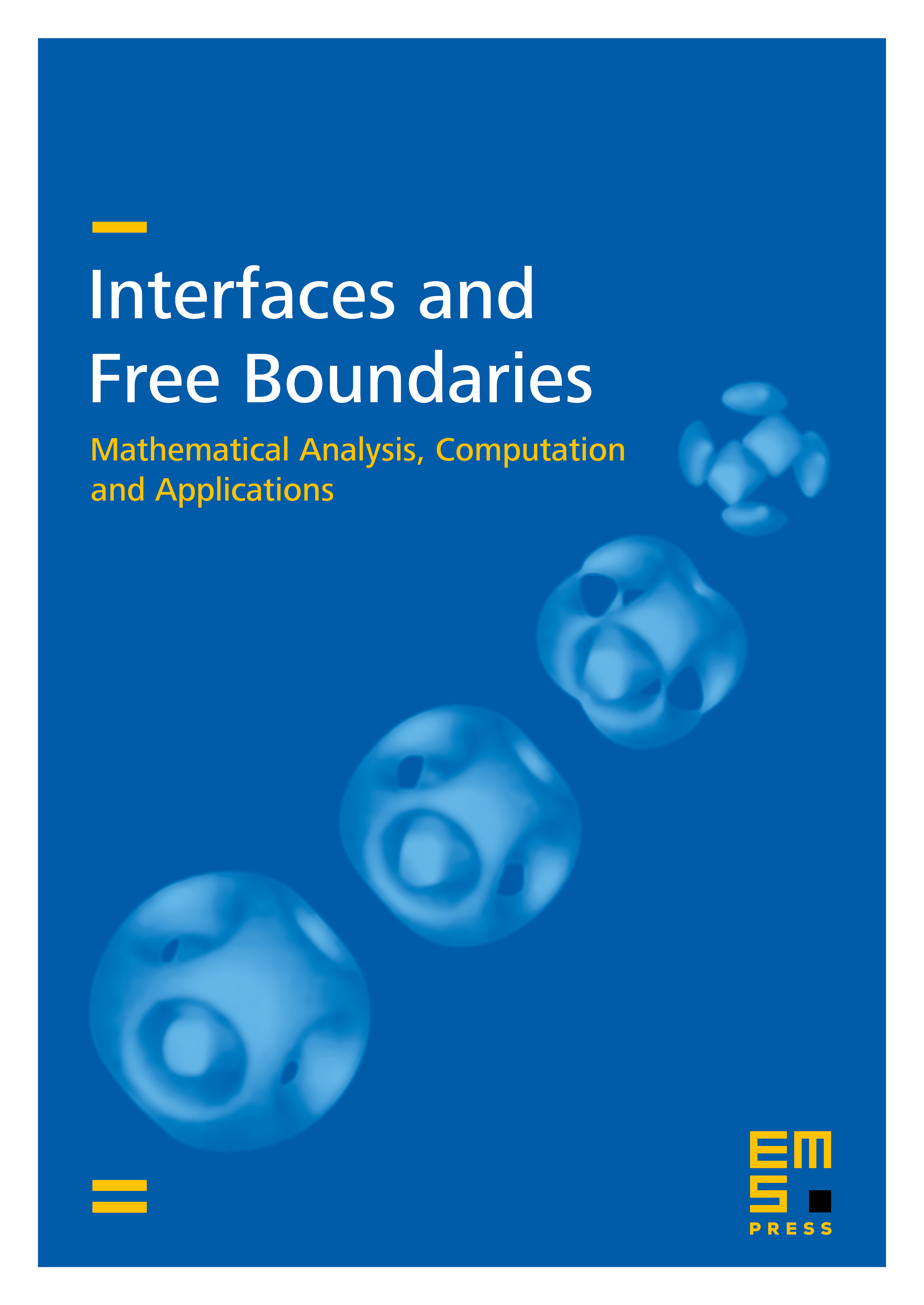On a phase-field model for electrowetting
Christof Eck
Universität Stuttgart, GermanyMarco Antonio Fontelos
Universidad Autónoma de Madrid, SpainGünther Grün
Universität Erlangen-Nünberg, GermanyF. Klingbeil
Universität Erlangen-Nünberg, GermanyO. Vantzos
Universidad Autónoma de Madrid, Spain

Abstract
The term electrowetting is commonly used for phenomena where shape and wetting behavior of liquid droplets are changed by the application of electric fields. We develop and analyze a model for electrowetting that combines the Navier–Stokes system for fluid flow, a phase-field model of Cahn–Hilliard type for the movement of the interface, a charge transport equation, and the potential equation of electrostatics. The model is derived with the help of a variational principle due to Onsager and conservation laws. A modification of the model with the Stokes system instead of the Navier– Stokes system is also presented. The existence of weak solutions is proved for several cases in two and three space dimensions, either with non-degenerate or with degenerate electric conductivity vanishing in the droplet exterior. Some numerical examples in two space dimensions illustrate the applicability of the model.
Cite this article
Christof Eck, Marco Antonio Fontelos, Günther Grün, F. Klingbeil, O. Vantzos, On a phase-field model for electrowetting. Interfaces Free Bound. 11 (2009), no. 2, pp. 259–290
DOI 10.4171/IFB/211